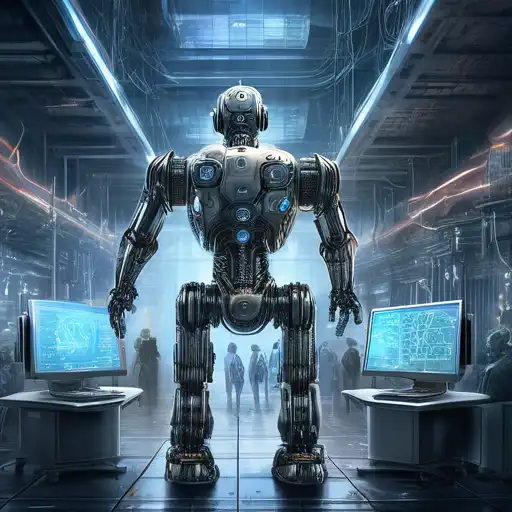Understanding AI and Machine Learning
In the realm of technology, Artificial Intelligence (AI) and Machine Learning (ML) are two of the most talked-about topics. While they are often used interchangeably, they represent distinct concepts with unique applications and implications. This article delves into a comparative study of AI and ML, shedding light on their differences, similarities, and how they are shaping the future of technology.
What is Artificial Intelligence?
Artificial Intelligence is a broad field of computer science focused on creating systems capable of performing tasks that typically require human intelligence. These tasks include problem-solving, recognizing speech, learning, planning, and understanding natural language. AI can be categorized into two types: narrow AI, which is designed to perform a narrow task (e.g., facial recognition or internet searches), and general AI, which can perform any intellectual task that a human being can.
What is Machine Learning?
Machine Learning, a subset of AI, involves the development of algorithms that allow computers to learn from and make decisions based on data. Unlike traditional programming, where humans write explicit instructions, ML models improve their performance as they are exposed to more data over time. ML is behind many of the services we use today, including recommendation systems like those on Netflix and Amazon, and predictive text on our smartphones.
Key Differences Between AI and ML
- Scope: AI encompasses a wider range of technologies and applications, while ML is specifically focused on algorithms that learn from data.
- Functionality: AI systems can perform tasks that mimic human intelligence, whereas ML systems learn from data to improve their performance on a specific task.
- Dependency: ML is dependent on data to learn and make predictions, but AI can operate without data by following predefined rules.
How AI and ML Work Together
Despite their differences, AI and ML often work hand in hand. ML algorithms are a key component of many AI systems, enabling them to learn from data and improve over time. For example, an AI-powered chatbot uses ML to understand and respond to user queries more effectively as it interacts with more users.
The Future of AI and ML
The integration of AI and ML is driving innovation across industries, from healthcare to finance to entertainment. As these technologies continue to evolve, we can expect to see more sophisticated applications that further blur the lines between human and machine capabilities. The potential for AI and ML to transform our world is immense, but it also raises important ethical and societal questions that must be addressed.
For those interested in diving deeper into the world of AI and ML, exploring data science can provide valuable insights into how these technologies are developed and applied.
Conclusion
AI and Machine Learning are revolutionizing the way we live and work. While they share common goals, their approaches and applications differ significantly. Understanding these differences is crucial for anyone looking to leverage these technologies in their field. As we move forward, the synergy between AI and ML will undoubtedly unlock new possibilities and challenges, making it an exciting area to watch.
